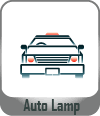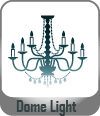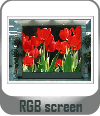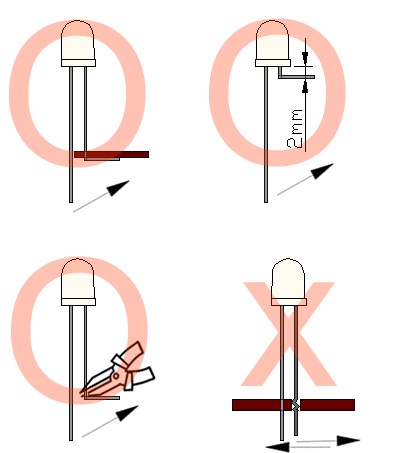Through hole LED
Series No:
Weight:(g/pcs)
Dimension:(mm)
Package:
Specification:
Inquiry
Description:
Shining a Light on Cylindrical LED Diodes: The Backbone of Modern Electronics
In the evolving landscape of electronic components, cylindrical LED diodes stand out as pivotal elements in a wide array of applications. Known for their efficiency and versatility, these LEDs, synonymous with superflux LEDs or piranha lights, have carved a niche in the electronics industry. This article delves into the unique features, widespread applications, and the tangible benefits of cylindrical LED diodes, complemented by insightful case studies and genuine user testimonials, aimed at electronics manufacturers, engineers, purchasers, and administrators.
Understanding Cylindrical LED Diodes
Cylindrical LED diodes, often referred to as superflux LEDs or through-hole LEDs, offer a unique blend of durability and high performance in a compact form factor. Distinguished by their cylindrical shape, these diodes are designed for direct insertion into printed circuit boards, making them a preferred choice for a variety of electronic applications.
Features and Applications
Versatility and Performance: The cylindrical design is not just for aesthetics; it allows for optimal light dispersion, making these diodes suitable for high-visibility requirements. From automotive lighting to consumer electronics, cylindrical LED diodes provide the reliability and performance needed in today’s demanding applications.
Efficiency: Known for their low power consumption, these LEDs are an eco-friendly choice, reducing the overall energy footprint of the devices they illuminate.
The Advantages of Opting for Cylindrical LED Diodes
Durability: Their robust construction ensures that these LEDs can withstand rigorous conditions, making them ideal for outdoor and automotive applications.
Cost-Effectiveness: Despite their high performance, cylindrical LED diodes are an economical choice, offering long-term savings in terms of energy consumption and maintenance costs.
Case Studies: Cylindrical LED Diodes in Action
Real-world applications of cylindrical LED diodes highlight their effectiveness and versatility. For instance, in automotive lighting, these diodes have been instrumental in enhancing safety and visibility, thanks to their bright and focused light output.
Hearing from the Users
Feedback from professionals in the electronics industry underscores the significance of cylindrical LED diodes in modern electronic designs. Engineers praise their reliability and efficiency, while purchasers appreciate the value they bring to products.
Conclusion: The Bright Future of Cylindrical LED Diodes
As the demand for more efficient and durable electronic components grows, cylindrical LED diodes are poised to play an increasingly critical role. Their unique combination of performance, efficiency, and versatility makes them an indispensable element in the future of electronics design.
Call to Action: Embrace the future of electronics with the innovative power of cylindrical LED diodes. Discover how they can illuminate your next project with unmatched efficiency and reliability.

Features
- Cylindrical Head Super Flux LED: This design, characterized by a cylindrical head, offers a distinct aesthetic and may provide a different light dispersion pattern compared to traditional flat-top LEDs.
- Compact Size: The dimensions of 7.62 x 7.62 x 4.3 mm make these LEDs suitable for a variety of applications where space is a constraint, yet powerful lighting is required.
- Wide Viewing Angles: This feature is crucial for applications where the LED needs to be visible from various angles, enhancing the usability and effectiveness of the LED in diverse settings.
- Ideal for Backlight and Indicator: Their design makes them perfect for backlighting applications in displays, control panels, and as indicators in electronic devices, where clear and uniform illumination is needed.
- RoHS Compliance: Ensures that these LEDs are manufactured without using certain hazardous substances, aligning with environmental safety and health standards.
Applications
- Backlighting in Electronics: Often used for backlighting in LCD displays, keypads, and control panels, providing uniform and effective backlighting.
- Indicator Lights: Suitable as indicator lights in electronic devices, automotive dashboards, control panels, and machinery, where visibility from different angles is required.
- Decorative Lighting: Can be used for decorative lighting applications, both indoor and outdoor, due to their unique shape and bright light output.
- Signage and Display Boards: Employed in signage, billboards, and display boards for their durability and wide viewing angle, ensuring high visibility.
- Consumer Electronics: Incorporated into various consumer electronics as status indicators and for backlighting screens and buttons.
- Automotive Lighting: Applicable in automotive lighting systems, including for dashboard illumination and signal lights.


Electrical-optical characteristics:
Article No | color | material | wavelength | apperance | v_typ | v_max | luminous_min | luminous_typ | degree |
|---|---|---|---|---|---|---|---|---|---|
BL-FL7644BGC |
Ultra Bluish Green |
InGaN |
505 |
Water Clear |
4.2 |
500 |
2800 |
140 |
|
BL-FL7644PGC |
Ultra Pure Green |
InGaN |
525 |
Water Clear |
4.2 |
600 |
3000 |
140 |
|
BL-FL7644UBC |
Ultra Blue |
InGaN |
470 |
Water Clear |
4.2 |
500 |
3000 |
140 |
|
BL-FL7644UEC |
Ultra Orange |
AlGaInP |
630 |
Water Clear |
2.5 |
180 |
900 |
140 |
|
BL-FL7644UGC |
Ultra Green |
AlGaInP |
574 |
Water Clear |
2.5 |
400 |
700 |
140 |
|
BL-FL7644URC |
Ultra Red |
AlGaAs,DDH |
660 |
Water Clear |
2.2 |
200 |
800 |
140 |
|
BL-FL7644UWC |
Ultra White |
InGaN |
- |
Water Clear |
4.2 |
500 |
3000 |
140 |
|
BL-FL7644UYC |
Ultra Yellow |
AlGaInP |
590 |
Water Clear |
2.5 |
300 |
900 |
140 |
Package configuration & Internal circuit diagram
Partno description:
More Information
Lens Color:
| Code | D | T | C | W | E | |
| Meaning | color Diffused | Color Tinted | Water Clear | Water Diffused | Orange diffused |
Absolute maximum ratings (Ta=25°C)
| Parameter | SR | LR | UR | UE | UY | UG | PG | BG | B | UB | UV | W | Unit |
| Forward Current I F | 25 | 25 | 25 | 30 | 30 | 30 | 30 | 30 | 30 | 30 | 30 | 30 | mA |
| Power Dissipation P d | 60 | 60 | 60 | 65 | 65 | 75 | 110 | 110 | 120 | 120 | 120 | 120 | mW |
| Reverse Voltage V R | 5 | 5 | 5 | 5 | 5 | 5 | 5 | 5 | 5 | 5 | 5 | 5 | V |
| Peak Forward Current I PF (Duty 1/10 @1KHZ) | 150 | 150 | 150 | 150 | 150 | 150 | 150 | 100 | 100 | 100 | 100 | 100 | mA |
| Operation Temperature T OPR | -40 to +80 | °C | |||||||||||
| Storage Temperature T STG | -40 to +85 | °C | |||||||||||
| Lead Soldering Temperature T SOL | Max.260+-5°C for 3 sec Max. (1.6mm from the base of the epoxy bulb) | °C | |||||||||||
Related Information
Applied for:




The LEDs described here are intended to be used for ordinary electronic equipment (such as office equipment,
communication equipment and household applications). Consult Betlux’s Sales in advance for information on
applications in which exceptional reliability is required, particularly when the failure or malfunction of the LEDs
may directly jeopardize life or health (such as in aviation, transportation, traffic control equipment, medical
and life support systems and safety devices).
CAUTIONS for Through-Hole LED Lamps
1. Application
The LEDs described here are intended to be used for ordinary electronic equipment (such as office equipment, communication equipment and household applications). Consult Betlux’s Sales in advance for information on applications in which exceptional reliability is required, particularly when the failure or malfunction of the LEDs may directly jeopardize life or health (such as in aviation, transportation, traffic control equipment, medical and life support systems and safety devices).
2. Storage
The storage ambient for the LEDs should not exceed 30℃ temperature or 70% relative humidity. It is
recommended that LEDs out of their original packaging are used within three months
For extended storage out of their original packaging, it is recommended that the LEDs be stored in a sealed
container with appropriate desiccant or in a desiccator with nitrogen ambient.
3. Cleaning
Use alcohol-based cleaning solvents such as isopropyl alcohol to clean the LED if necessary
4. Lead Forming & Assembly
During lead forming, the leads should be bent at a point at least 3mm from the base of LED lens. Do not use
the base of the leadframe as a fulcrum during forming.
Lead forming must be done before soldering, at normal temperature.
During assembly on PCB, use minimum clinch force possible to avoid excessive mechanical stress.


Soldering
When soldering, leave a minimum of 2mm clearance from the base of the base of the lens to the soldering point. Dipping the lens into the solder must be avoided.
Do not apply any external stress to the lead frame during soldering while the LED is at high temperature.
Recommended soldering conditions:
| IR Reflow Soldering (for SMD display) | Wave Soldering | Soldering Iron | |||
| Pre-Heat | 150-180°C | Pre-Heat | 100°C Max. | Temperature | 300°C Max. |
| Pre-Heat Time | 120sec Max. | Pre-Heat Time | 60sec Max. | ||
| Peak Temperature | 260°C Max. | SolderWave | 260°C Max. | Soldering Time | 3sec Max.(one time only) |
| Soldering Time | 10 sec Max. | Soldering Time | 5sec Max. | ||
Note: Excessive soldering temperature and/or time might result in deformation of the LED lens or failure of the LED
ESD(Electrostatic Discharge)
Static Electricity or power surge will damage the LED.
Suggestions to prevent ESD (Electrostatic Discharge):
n Use a conductive wrist band or anti-electrostatic glove when handling these LEDs
n All devices, equipment, and machinery must be properly grounded
n Work tables, storage racks, etc. should be properly grounded
n Use ion blower to neutralize the static charge which might have built up on surface of the LED’s
plastic lens as a result of friction between LEDs during storage and handling
ESD-damaged LEDs will exhibit abnormal characteristics such as high reverse leakage current,
low forward voltage, or “no light on” at low currents. To verify for ESD damage, check for “light on”
and Vf of the suspect LEDs at low currents.
The Vf of “good” LEDs should be>2.0V@0.1mA for InGaN product and >1.4V@0.1mA for AlInGaP
product.

Drive Method
An LED is a current-operated device. In order to ensure intensity uniformity on multiple LEDs connected in
parallel in an application, it is recommended that a current limiting resistor be incorporated in the drive circuit,
in series with each LED as shown in Circuit A below.

When selecting power for LED systems, it’s essential to understand several key parameters to ensure safe operation, longevity, and optimal performance. Here are some steps and considerations for LED power selection:
- Determine the Forward Voltage (Vf) of the LED(s):
Each LED has a forward voltage, which is the voltage at which the LED operates when the current is flowing through it. This value can typically be found in the LED’s datasheet.
- Determine the Forward Current (If) of the LED(s):
The forward current is the current at which the LED is designed to operate. Running an LED at higher than its rated current can reduce its lifespan and increase the heat it produces.
- Decide on the Configuration:
Series Configuration: When LEDs are connected in series, the forward voltages add up, but the current remains the same.
Parallel Configuration: When LEDs are connected in parallel, the forward voltage remains the same, but the currents add up. This configuration can be risky because if one LED fails or has a slightly lower forward voltage, it can cause the other LEDs to draw more current.
Calculate Total Power Requirements:
Power (W) = Total Forward Voltage (V) x Total Forward Current (A)
For example, if you have three LEDs connected in series, each with a forward voltage of 3V and a forward current of 20mA, the total power requirement would be:
Power = (3V + 3V + 3V) x 20mA = 9V x 0.02A = 0.18W
- Select an Appropriate Power Supply:
- Voltage Rating: The power supply voltage should match or slightly exceed the total forward voltage of your LED configuration.
- Current Rating: The power supply’s current rating should meet or exceed the total forward current of your LED configuration.
- Safety Margin: It’s a good practice to select a power supply that can provide at least 20% more power than your calculated requirement. This ensures the power supply isn’t operating at its maximum capacity, which can extend its life and ensure safer operation.
- Consider Additional Features:
- Dimming Capability: If you want to control the brightness of your LEDs, choose a power supply with dimming capabilities.
- Overcurrent and Overvoltage Protection: To protect your LEDs, select a power supply with built-in protection mechanisms.
- Thermal Management: Ensure that the power supply has adequate cooling, especially if it will be enclosed or in a location with limited airflow.
- Regulation and Efficiency:A power supply with good regulation will maintain a consistent voltage output despite variations in the load. High efficiency ensures minimal power is wasted as heat.
- Physical Size and Form Factor:Depending on where you plan to place the power supply, its size and shape may be critical factors.
In summary, when selecting power for LED systems, understanding your LED’s requirements and the configuration you plan to use is essential. Then, pick a power supply that meets those needs with some added safety margin, keeping in mind any additional features or constraints relevant to your project.
Here are some well-regarded brands in the industry:
- Mean Well: One of the most recognized brands in the LED power supply industry, Mean Well offers a wide range of products suitable for both indoor and outdoor applications. Their units often come with features like overcurrent protection, dimming capabilities, and high efficiency.
- Tridonic: A global leader in lighting technology, Tridonic offers LED drivers and power supplies that cater to various lighting solutions, from simple setups to advanced smart lighting systems.
- Philips Advance Xitanium: Philips is a well-known brand in the lighting industry, and their Xitanium series of LED drivers are known for reliability and performance. They cater to both indoor and outdoor LED applications.
- Osram: Another giant in the lighting industry, Osram offers a range of LED drivers and power supplies suitable for various applications, including architectural and street lighting.
- LIFUD: Specializing in LED drivers, LIFUD is known for its high-quality products that cater to both commercial and residential LED lighting solutions.
- MOSO: This brand offers a variety of LED drivers, especially for outdoor and industrial applications. Their products are known for durability and performance.
- TDK-Lambda: With a history in power electronics, TDK-Lambda offers a range of power supplies and LED drivers suitable for various applications, emphasizing reliability and advanced features.







